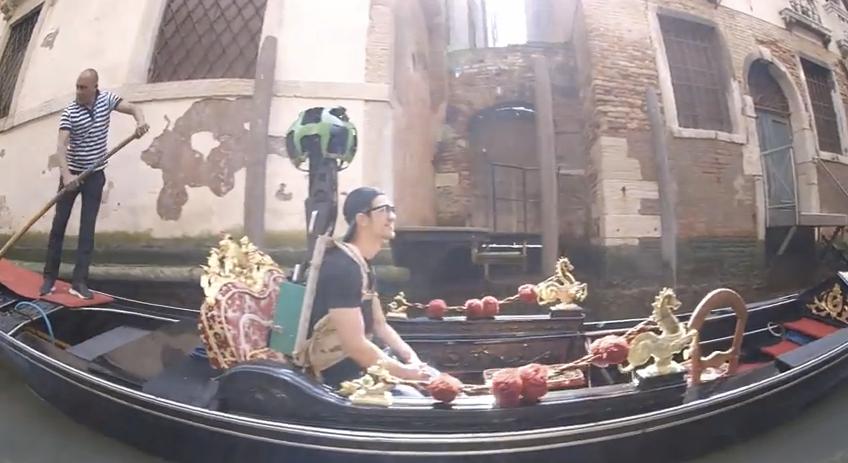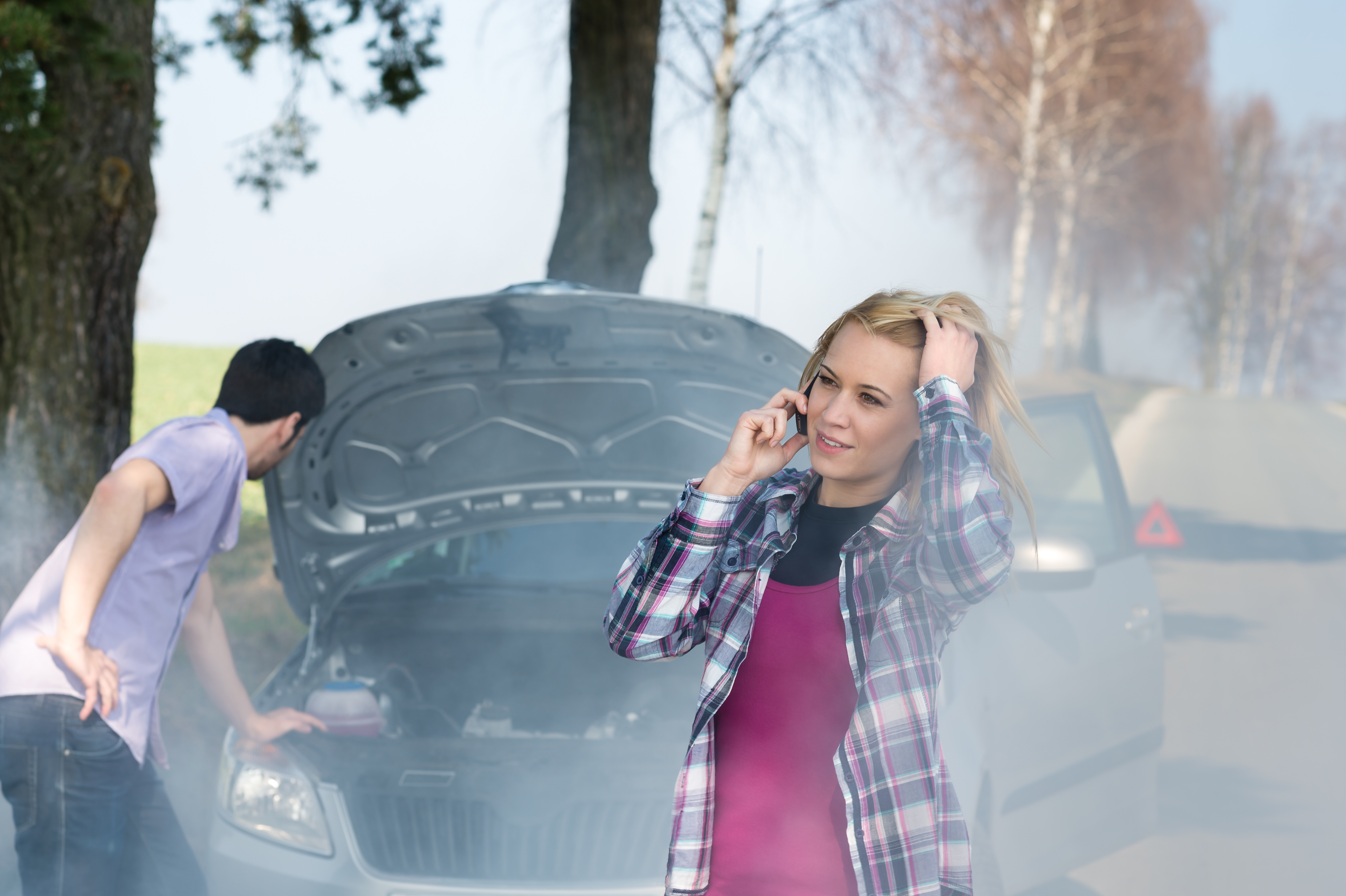
ShutterstockSharing was supposed to make me feel good. Instead it made me feel like this.
The air-conditioning compressor: Sounds harmless enough — another of those little metal widgets bolted under the hood of your car. But under the right circumstances, it can be a killer. I know. It offed my car-sharing experiment.
If you’re just joining us, last winter, my wife and I decided to rent out one of our cars as a way to cover some of the costs of owning it — a decision I wrote about in the first story in this series. We listed the car through RelayRides, one of several new companies that facilitate this sort of “peer-to-peer” car rental.
Our first transaction went smoothly. John, the guy who rented the car, brought it back right on time, gas tank full, and not obviously any worse for the wear. He’d had it for two weeks, and put 500 or so miles on it, and we had a cool $246 to show for it. (John had paid more than that, but RelayRides takes 25 percent off the top to cover insurance and other expenses, plus a handy profit, I’m sure.)
It was a decent start, but it wasn’t even a third of what we’d spent to prep the car for renting ($775 on a full tuneup and deep clean). It would take a lot more renting before we covered our start-up costs and started to chip away at the $860 a year we pay to keep the car registered and insured. Our dream of making enough to buy a cargo bike seemed a long way off.
I started to look a little closer at our P&L. One of my biggest concerns before I’d rented the car was the risk of someone wrecking it and us being left carless, or worse, liable for injuries suffered in the wreck. I’d gone so far as to contact the Washington state insurance commissioner to be sure that RelayRides’ carrier was approved through the official channels. The short answer was “no,” but a commissioner’s spokesperson did not think that would be a problem.
“RelayRides is using a non-admitted insurer, but they do have coverage,” Rich Roesler wrote in an email. “We’ve received no complaints. At this point, we don’t foresee enforcement action by us against them.”
But the smaller expenses began to worry me — and the paltry amount of money we were making by renting it didn’t help.
One of the benefits of car sharing, from a renter’s perspective, is the cost, which can be significantly cheaper than renting a car from one of the national chains. I’d set our rental prices based on RelayRides’ recommendations for what I could get for a Subaru in Seattle: $6 an hour, $33 a day, or $164 a week.
Car rental rates fluctuate with the seasons, however. When, in early summer, I compared my rates to what you’d pay Zipcar or its parent company, Avis, it was clear that I was undercharging pretty dramatically: For a Ford Escape from Zipcar, I’d pay $11 an hour or $83 a day. For a week with an “intermediate SUV” from Avis, I’d pay $399.99. Those numbers are roughly double what RelayRides had suggested for me.
I could hike my rates, track the numbers through the seasons, and adjust accordingly, but what would I have to charge to make up for all the invisible costs that silently added up while my car was out in the world — the slow wear and tear, the depreciation in value? To gauge that, I turned to the venerable American Automobile Association, which puts out an annual report on what it costs to own and operate a vehicle.
When I’d originally figured our expenses, I’d included just the insurance and registration, but AAA uses a much more comprehensive system that takes into account insurance and registration, plus taxes, depreciation, and other “ownership costs” as well as “operating costs” like gas, maintenance, and tires. By this measure, it costs me 77.3 cents per mile to operate a four-wheel-drive SUV, the category that comes closest to capturing my Subaru. (To figure out your own driving costs, check out AAA’s handy brochure [PDF].)
So how was I doing? Let’s look at John’s trip to Mount Baker. Using AAA’s system, and subtracting the cost of the gas (which he bought) and the finance charge (we own the car outright), I figured I shelled out $246.93 just to keep the car legal and running for John’s ski vacation. He’d paid me, what, again? $246. I’d rented my car for two weeks, and taken a 93-cent loss in the bargain?
Still, this was pretty crude math, and many of these invisible expenses seemed quite abstract. As far as we could tell, our renters had taken good care of our car.
But as if on cue to back up the AAA’s data, the bills began to roll in: a $44.84 oil change, a $100 insurance deductible to repair a cracked windshield. In May, I got a bill for a bunch of bridge tolls that one of our renters had unknowingly racked up. He ran a check over soon after I texted him about it, and apologized profusely, but that was time I could have spent working. The opportunity costs were mounting, too. I was sliding deeper into the red by the week.
Then came the A/C compressor. We’d rented the car to a young couple, Heidi and Jimmy, from San Antonio. Neither had a reputation built up on RelayRides, but Heidi had a solid background with Airbnb, and from that I gathered that she, at least, was trustworthy. “What the hell,” we thought.
Hell is right: When the duo arrived back at our house later that week, Jimmy held what looked like a dead rat snake in his hands — the shredded remains of our A/C compressor belt. He’d tried to find a replacement, but failed. They were very apologetic.
Mike, our friendly neighborhood car mechanic, wasn’t smiling after I gave him a few hours to look over the car: “What has happened to your A/C is what we call ‘catastrophic compressor failure,’” he said. “It’s a big term, and it means big money.”
The compressor, he explained, exploded — or imploded, I’m not really sure which — and then proceeded to spread shrapnel all throughout the cooling system. Total estimate for the repair and car colonic: $1,500.
Mike tells us our A/C would’ve blown up anyway — nothing the drivers did caused the catastrophe. But they added mileage and got us there quicker, and now we were stuck with a car that had no A/C and a hefty repair bill to boot.
I’ve written the RelayRides support team to ask if their insurance will cover the fix, as the blow-up did happen on their watch. But a recent email from Rich Roesler at the insurance commissioner’s office doesn’t inspire confidence: On May 31, after New York state issued RelayRides a cease and desist order due to insurance issues, Roesler wrote to say, “At this point, we’re urging folks to be very cautious about signing up — particularly since many personal auto insurers will NOT cover you if the car’s being — essentially — rented out.” (UPDATE: A customer service rep informs me that “the shredded air conditioning belt is the result of wear and tear. And RelayRides does not cover damage caused for normal wear and tear.” Bummer.)
In the meantime, we don’t have the cash on hand to pay for the work, and we’ve decided it’s best not to rent the car sans A/C — it’s been hot, even in the Pacific Northwest. It’s back to the driveway for the Subaru. We’re out of business. Womp womp womp.
What, if any, lessons do my misadventures in car sharing hold for the rest of you? Well, keep in mind that this is one person’s experience — and a person who obviously did a lot of his homework on the fly. I could have pimped this ride a lot more aggressively, tracked the seasonal rental market and adjusted my rates accordingly, and rented the car for shorter periods of time, which would generally net more money per mile. But a few words to the wise for those who would rent out their own cars:
- This stuff takes time. From airing rental requests to checking people’s online reputations and the never-ending challenge of keeping a vehicle cleaned and maintained, you’ll burn some hours on this little business.
- You’ll also burn money. A car is a risky vehicle for a business venture. Cars are expensive to maintain and full of hidden costs and unpleasant surprises. There are a lot of moving parts, as they say, and those parts break.
- Finally, if you do decide to get into car sharing, you should probably do it for more than the money. You better really like the idea of a pooling your resources with your community, and keeping a few other cars off the streets.
As for us? Perhaps it’s just as well that our car-sharing career came to an untimely end. After working through all this hassle, and looking again at our lives in the city, we’ve decided that being a one-car family isn’t such a bad option after all. We’re trading in our second car for that cargo bike we’ve been drooling over.
Heck, maybe I’ll rent that out on a part-time basis (there’s an app for that), make a little money for groceries. Last I checked, bikes don’t have A/C compressors that go kerflooey when you least expect it, and I don’t need the neighborhood auto mechanic to change a flat or grease the chain.
Tune in next week to learn about a couple of people who claim that they’ve actually turned car sharing into a business — with profits and everything.



